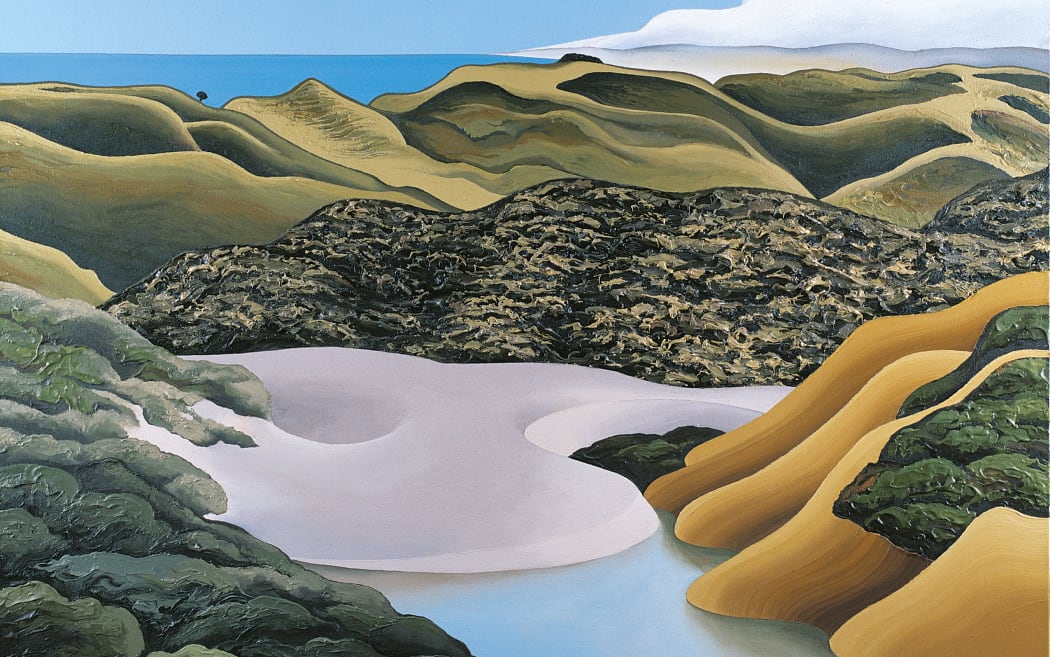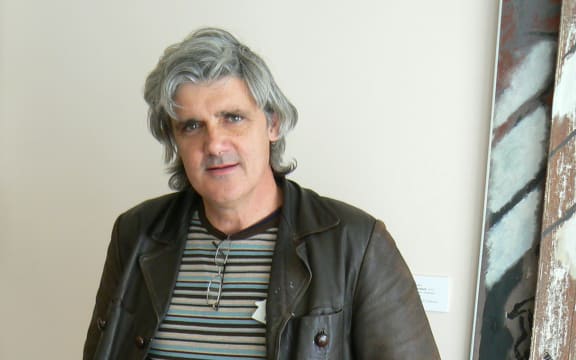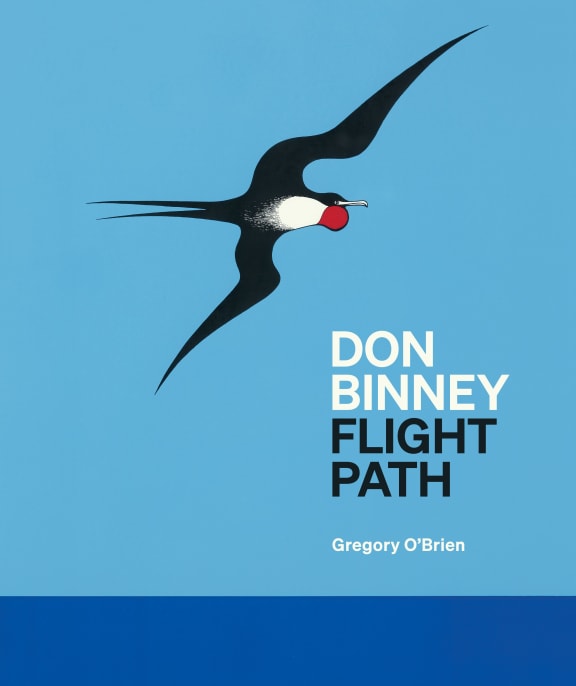
Don Binney, Wainamu, Te Henga ’74 III, 1974 oil and acrylic on canvas, 1065 × 1065 mm Photo: Supplied
In the handsome just released book Don Binney: Flight Path, Gregory O’Brien tracks the avian-like swoops in the career of the late Tāmaki Makaurau painter, teacher and ornithologist (1940–2012). Flight Path is a work of lively detail, drawing extensively on Binney’s letters, journals and other writings (including an unpublished memoir) producing the first full-length monograph on his work.
In the 1960s Don Binney was a golden boy of New Zealand art. He was known for his bold graphic paintings of birds in New Zealand landscape - particularly over his beloved Te Henga Bethell's Beach on the West Coast of Auckland (an “artistic tūrangawaewae”).
"Binney’s a ghost out there; that's the coastal landscape of his great paintings. Even when he was still alive, he was already a ghost out there. He didn't have to die to become a ghost. He was a real presence. Binney’s great bird paintings are out there, certainly if you go out to that place, you feel the presence of them", O’Brien tells Mark Amery.

Gregory O'Brien Photo:
Gregory O’Brien is a painter himself and, alongside his poetry and art, has written major books on New Zealand artists including Lands and Deeds: Profiles of Contemporary New Zealand Painters (Godwit Publishing, 1996) and A Micronaut in the Wide World: The Imaginative Life and Times of Graham Percy (Auckland University Press, 2011). In 2017 O’Brien became a Member of the New Zealand Order of Merit and received an honorary doctorate from Te Herenga Waka Victoria University of Wellington.
Binney’s work was beloved - much adopted by both the conservation movement and a nation looking for a visual language for modern Pākehā New Zealand ‘taking flight’.
These paintings express a sense of growing cultural freedom, but also need to care for the land and indigenous culture.
As O’Brien chronicles, Binney’s fortunes changed after travels overseas and the breakup of his first marriage in the '70s.
The artist felt increasingly rejected by the art world, and shoehorned by labels like ‘regionalism’.

Vanishing Sign II, 1975, Don Binney Photo: Supplied
“By the ‘70s he did feel quite a little bit left behind. That's a problem because he was hyped up to the nth degree as a young man, he sort of was delivered on to the Auckland art scene and his early 20s.
“He was fantastic-looking, he had a leather jacket. He was very partyable. He was very social. He’d just married Judith Binney, his first wife and she was beautiful and they were a star couple, a golden couple,” says O’Brien.

Photo: supplied
Yet, as lavishly illustrated in this large format book, Binney continued to make bold, interesting moves both as a painter but also as a photographer, drawer and writer.
Binney may be known best for his birds - which he started drawing and painting remarkably young.
However, Flight Path makes clear how Binney closely observed embedded cultural energies in the curves and textures of our landscapes.
"Binney is the set of eyes in the landscape, he is the single eye of the bird looking at you from the painting."
Binney was also a pioneer in his adoption of te reo Māori, O’Brien says.
“The place names and the names of native birds, from the word go, from the get go in 1963 with his first show, he always used Māori names. It was kind of quite trailblazing and it wasn't just voyeuristic or because he liked the sound, it was actually he had a sense of this other this earlier knowledge, this earlier poetry."

